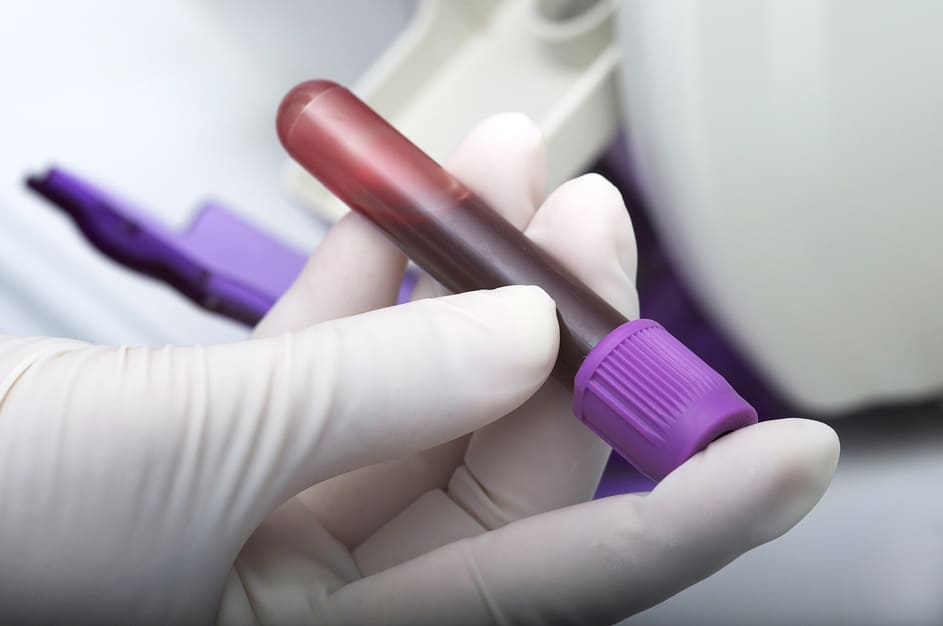Q fever is essentially a reproductive disease in ruminants. The clinical signs are abortions, weak newborns, stillbirths, placental retention, metritis/endometritis and more generally fertility disorders. These clinical signs are not specific to the disease and therefore the diagnosis of certainty can only be made by sampling and laboratory analysis. Furthermore, in cattle, the disease is often insidious and is only manifested by the deterioration of reproductive parameters.
Direct diagnosis (by PCR) at herd level is challenging because animals, even if infected, do not shed the bacteria continuously. Testing milk, faeces or even a vaginal swab on an ad hoc basis can give a negative result even if the animal is infected. Increasing the number of samples taken can reduce the risk of false negative results, but the cost of testing becomes high for farmers.
Serological testing, which looks for antibodies that have been produced by the animal in response to infection, is more economical. But they have a major drawback: animals that have been in contact with the bacteria during their lives may remain positive even if they have eliminated the bacteria. In contrast to individual PCR testing, serological testing may give a false positive result.
PCR on Bulk Tank Milk: the best way for Q fever test

For dairy herds, an alternative solution exists to counter the limitations of individual PCR tests and serological tests. This is PCR testing of bulk tank milk. Indeed, as mentioned above, not all infected cows excrete permanently the bacteria in milk. But in bulk tank milk, because of the presence of milk from all cows in the herd, it is very likely that enough cows will be shedding on the day of sampling to give a positive result.
In addition, the high sensitivity of PCR reduces the risk of a negative result due to the dilution of positive milk from a few cows with negative milk from other cows (uninfected cows or infected cows that are not shedding on the day of sampling).
An innovative solution for Q fever testing
However, the genetic material (DNA) of Coxiella burnetii degrades rapidly in milk. Therefore, if the test is not performed on the day of sampling, the risk of getting a negative result increases. This is why we developed QTests.
QTests are a combination of FTA cards and PCR analysis.
- FTA cards allow a biological sample to be stabilised and stored for several days. In addition, the chemical components within the card can neutralise bacteria, viruses and other potentially pathogens. A sample preserved in this way no longer presents a biological risk. This is particularly interesting in the case of Q fever diagnosis because of the zoonotic nature of the disease.
- The sensitivity of the PCR technique makes it ideally suited to the detection of bacterial DNA, which may be present in small quantities in a bulk tank milk sample.
The combination of FTA cards with bulk tank milk for the detection of Q fever had never been used before. Therefore, before making the QTests available, we carried out two validation studies to verify the compatibility of this technique with the diagnosis of Q fever under field conditions: temperatures can be high and the transfer time from sampling to the laboratory can be long. We also compared the detectability of the technique with PCR performed directly on bulk tank milk after aging. Finally, these studies enabled us to determine a detection limit. All our work was published in the Journal of Dairy Science communication (Treilles et al., 2021).

We have shown that QTests allow:
- Preserve samples for a minimum of 29 days at room temperature and up to 37°C
- Increase the sensitivity of the PCR compared to milk that has been aged without being stored on FTA card
- Detect a positive bulk tank milk as soon as its Coxiella burnetii concentration was higher than 5 x 103 CFU / mL
QTests are therefore the tool of choice for Q fever testing as they allow a sample of bulk tank milk to be safely stored for several days, even at high temperatures, and to provide a reliable diagnosis.
They are therefore ideally suited for Q fever diagnosis at the herd level as they combine safety, performance and simplicity at low cost. They provide access to Q fever diagnosis for the greatest number of dairy farmers and their veterinarians.
Treilles, M., Charollais, P., Guatteo, R., Azevedo, C., Achard, D., Munoz-Bielsa, J., & Gisbert, P. (2021). QTest: A new way to easily sample, store, and ship samples to perform Q fever PCR analysis on bulk tank milk. JDS Communications, 2(6), 409-414.
About the author
Philippe Gisbert (Ruminants Global Technical Manager)
Philippe Gisbert started his career in 1994 as a Vet practitioner working with companion and farm animals for over 9 years. He then became Health Affairs Manager for Group Agena (artificial insemination company). In 2008 he joined Eurofins – Laboratoire Coeur de France as Animal Health Unit Manager where he worked for 7 years until he joined Ceva France as Technical Manager Ruminants (Infectiology, Vaccines and Diagnostic). Since 2020 he is Global Technical Manager for Biologicals, Udder Health and Antiinflammatories. He is a member of SIMV diagnostic and anti-infective technical groups and has integrated different working groups of ANSES and UNCEIA related to epidemiology, antibiotic resistance and reproduction in livestock.
Explore author’s articlesFrequently Asked Questions
-
How contagious is Q fever?
This bacterium is very contagious because, due to its small size, it can spread very easily over several kilometres. In particular, it has been shown that in windy conditions it can be carried up to 18 kilometres. Moreover, the dose needed to infect an animal is low. In human medicine, it has been shown that 100 bacteria are enough to infect a person. -
What is the best treatment for Q fever?
As, in ruminants, medical treatment (antibiotics) are not efficient to treat the disease, the best way to control Q fever is to prevent it by biosecurity measures and vaccination. However, in an infected herd, vaccination has also been shown to reduce the clinical impact of the disease and to reduce the shedding of the bacteria by the animals.

.webp)
Leave your comments here